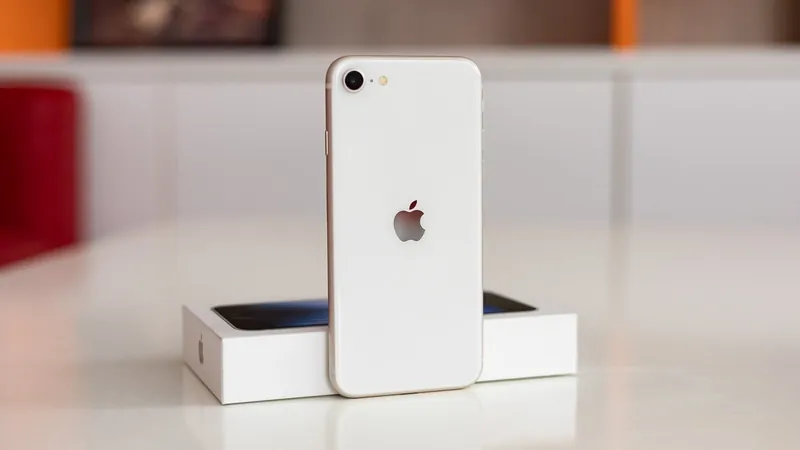
Apple's 5G Modem: A Risky Gamble that Lags Behind Qualcomm's Powerhouse!
2024-12-09
Author: Olivia
Apple's 5G Modem: A Risky Gamble that Lags Behind Qualcomm's Powerhouse!
Apple is set to make waves in the smartphone world, as they prepare to introduce their internally developed 5G modem—named Sinope—in some of their 2025 iPhones. However, this ambitious endeavor could spell trouble, as the new chip is reported to support only 40% of the download speeds offered by Qualcomm’s leading Snapdragon line.
To kickstart this transition, Apple plans to debut the Sinope modem in the upcoming iPhone SE 4—essentially a testing ground before rolling it out to the iPhone 17 Air. While this move shows Apple's commitment to innovation, it raises eyebrows given the modem's limitations compared to Qualcomm’s impressive Snapdragon X series, which boasts advanced capabilities.
Qualcomm has long been the established leader in the modem market, with extensive expertise in creating chips that offer superior 4G LTE and 5G band support. Apple’s early attempts at breaking free from Qualcomm's monopoly haven’t fared well. They initially partnered with Intel for the iPhone 12's 5G capabilities, but the Intel modem fell short in performance, forcing Apple to resume their costly relationship with Qualcomm.
Despite their challenges, Apple is committed to developing its own technology. However, early iterations of their 5G modem faced major hurdles. Size constraints and excessive overheating made it difficult to integrate into their devices, resulting in a significant performance disparity when compared to Qualcomm's Snapdragon X60 and X70 families.
Industry insiders, including renowned analysts Ming-Chi Kuo and Mark Gurman, believe that Apple has finally managed to overcome some of these design obstacles. The company aims to perfect the Sinope modem to create slimmer devices—potentially the thinnest iPhones to date, measuring under 6.5mm! Nonetheless, Gurman cautions consumers that this modem will not measure up to existing Qualcomm standards.
Specifically, the Sinope modem can only deliver 4 Gbps download speeds, a steep drop from the 10 Gbps that Qualcomm's latest offerings provide for the iPhone 16 series. On top of that, the modem lacks support for Verizon's ultrafast mmWave network and is limited to 4-carrier aggregation, meaning some users could see up to a staggering 60% decrease in peak download speeds when compared to devices equipped with Qualcomm technology.
Despite these hurdles, Apple remains determined to integrate the Sinope modem into less critical iPhone models. This strategy not only allows Apple to save on costs, but it provides invaluable user feedback as they hone their technology. The company reportedly has a three-year roadmap aimed at enhancing the Sinope chip to the point where it can ultimately phase out Qualcomm modems across all their iPhones.
As Apple dives deeper into the world of 5G, the tech giant faces both exciting potential and daunting challenges. Will the Sinope modem become a reliable alternative or merely a temporary solution? Only time will tell! Stay tuned as we report more on this unfolding technological saga!









 Brasil (PT)
Brasil (PT)
 Canada (EN)
Canada (EN)
 Chile (ES)
Chile (ES)
 España (ES)
España (ES)
 France (FR)
France (FR)
 Hong Kong (EN)
Hong Kong (EN)
 Italia (IT)
Italia (IT)
 日本 (JA)
日本 (JA)
 Magyarország (HU)
Magyarország (HU)
 Norge (NO)
Norge (NO)
 Polska (PL)
Polska (PL)
 Schweiz (DE)
Schweiz (DE)
 Singapore (EN)
Singapore (EN)
 Sverige (SV)
Sverige (SV)
 Suomi (FI)
Suomi (FI)
 Türkiye (TR)
Türkiye (TR)